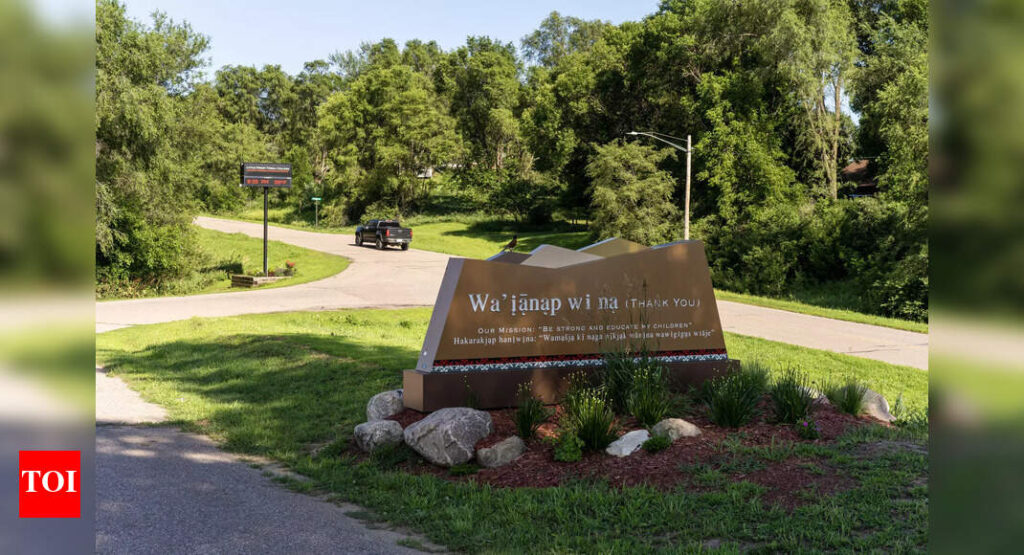Beyond elite universities: How Trump’s funding cuts threatened the survival of tribal colleges in the US

When conversations around higher education funding in the United States turn political, the spotlight usually falls on elite institutions such as Harvard or Columbia. But as The New York Times reported, this spring, the financial anxieties stirred by the Trump administration’s budget proposals were felt most acutely far from Ivy-covered campuses. They landed hardest on the country’s 37 tribal colleges and universities, institutions almost wholly reliant on federal support to survive.
A fragile funding ecosystem
The Nebraska Indian Community College (NICC), chartered by the Omaha Tribe of Nebraska and the Santee Sioux Nation, stands along a two-lane highway near the Iowa border. It is one of the tribal colleges that depend on the Bureau of Indian Education (BIE), which has historically underwritten these institutions under federal laws and treaties. When the Trump administration proposed cutting the BIE’s budget for tribal colleges to 22 million US dollars from 183 million, leaders at schools like NICC were forced to contemplate scenarios where classrooms might simply fall silent. NICC president Michael Oltrogge told The New York Times that even with one of the strongest reserve funds in tribal higher education — valued at about 5 million US dollars — the college could only keep its doors open for a year if the cuts materialised. Nearby, Little Priest Tribal College president Manoj Patil estimated his institution could stretch six months longer. “There’s billions and billions of dollars of money out there, and you’re looking at the smallest speck, and you’re taking that by 83%?” he said incredulously, noting that most tribal colleges “don’t have much of anything.”
Congressional pushback, but lasting unease
Two congressional committees rejected the proposed cuts last month, signalling that the reductions were unlikely to pass in any final federal budget. Yet the episode underscored what The New York Times described as “the fragile finances of America’s tribal colleges.” Even when budgets are preserved, administrators live with deep uncertainty, aware that annual funding remains at the mercy of shifting political priorities. Ahniwake Rose, president of the American Indian Higher Education Consortium, told the Times that the real damage often extends beyond accounting sheets: “It’s students not knowing: ‘Do I even start school right now? What’s the point?’”
Anchors of education and culture
The stakes are particularly high because tribal colleges serve roles that go far beyond conventional higher education. They often act as community anchors in rural areas where no other college-level teaching exists for dozens of miles. Programs range from chemistry and truck driving to Indigenous language preservation. Little Priest Tribal College, chartered by the Winnebago Tribe of Nebraska, is the only college in the US that teaches Ho-Chunk, the language of the Winnebago people. At NICC, some classes meet in an earth lodge, and this fall the institution will debut its second baccalaureate degree, focused on Indigenous environmental health. Enrollment has been rising. The Times reported that NICC had 273 Native students last fall, more than doubling from 109 in 2018. For many, the choice is not simply academic but personal. Student Rosalind Grant explained that after struggling with “culture shock” at a state university, she found belonging at NICC. “It helped me create my sense of my Native American identity,” she said.
A contested responsibility
The administration offered little explanation for its proposal, which also included cuts to K-12 and construction budgets within the Bureau of Indian Education. The Interior Department later issued a statement, quoted by The New York Times, promising commitment to “academic excellence, student well-being and culturally relevant instruction.” But for many educators, the episode raised deeper questions about the government’s recognition of treaty obligations. Wynema Morris, who teaches Native American studies at NICC, described the proposal as evidence of disregard for commitments made under duress. “We gave up the real estate — at the point of a gun and treaties,” she said. “But what did we ever get for it in return, except death, disease and destruction?”
The road ahead
For now, congressional intervention has kept tribal colleges afloat. Yet administrators remain cautious. “Tribal colleges live paycheck to paycheck,” Patil told the Times, capturing the precarious balance between resilience and vulnerability that defines these institutions. As the policy debate continues in Washington, the larger reality is clear: While the national conversation gravitates toward elite universities, the survival of tribal colleges — small in scale, but profound in cultural and educational importance — depends on decisions made in federal budgets year after year.TOI Education is on WhatsApp now. Follow us here.






